Depth of the storm sewer
Today, many country houses are equipped with a storm sewer system. Livnevka, as it is often called, helps to keep the area clean and does not allow water to undermine the walls and foundations of the structure. But the effective operation of such a system depends largely on the correct calculations and planning, so you need to know what the depth of the storm sewer should be. This is what this article will be about.
We study standards
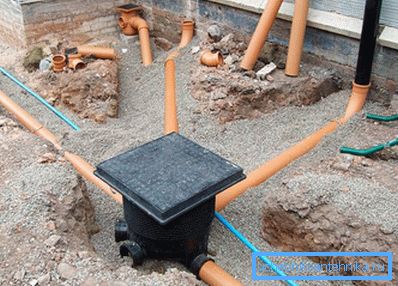
All construction and installation work must be carried out in accordance with applicable regulations, rules and regulations. Such requirements are specified in GOST and SNiP. The same applies to the installation of storm sewers. There is a SNiP 2.04.03-85, which is called “Sewerage. Outdoor facilities and networks.
Some of the points in this document indicate the recommended depth of the drain pipe. According to them, laying should be carried out:
- for pipes with a cross section of up to 500 mm not less than 30 cm below the ground freezing level;
- for pipes with a cross section of more than 500 mm - not less than 50 cm.
But all these points relating to the depth of occurrence are more of a recommendatory nature. Their use lies on the conscience of installers and builders. According to SNiP, it is necessary to carry out the laying, relying on the experience of operating sewer systems in each specific region. In general, the minimum depth should be at least 70 cm from the surface.
What depth to choose

The best option is to lay the storm sewer pipes below the level of soil freezing. Digging a trench, you should know this figure, and even add to it the thickness of the sand pad at the bottom. But in reality it is not always possible to do this.
In some regions of our country, especially those located closer to the north, the depth of freezing can reach one and a half or even two meters. Plus, the ground itself, it can be quite stony.
In addition, pipe slope requirements must be taken into account. If it is not followed, the water will not go away, then the efficiency of the stormwater will decrease markedly. And in this case, moreover, if the terrain is uneven, the depth of some trenches can reach large values.
Some may ask a question - and you can lay the pipe closer to the surface, because so often come when installing household sewage? But in these systems there is a significant difference. It consists in the temperature of the effluent.
Tip! In the domestic sewage system, if people live in the house permanently, the temperature of the drains is always room temperature. Constantly flowing warm water and sewage heat up the pipes themselves and the space around them. As a result, freezing is unlikely.
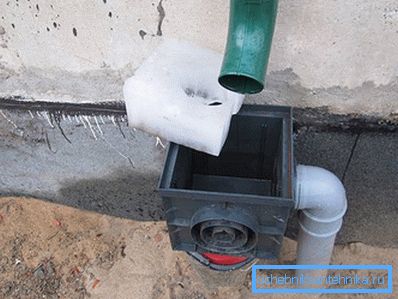
In the storm sewer there are no warm drains. And the water is not always there. Throughout the winter, the pipes are empty, and the temperature is below zero. When spring begins, melt water falls into a cold "dungeon." The result is icing and congestion.
If it is not possible to deepen the storm sewer below the depth of soil freezing, it must be warmed. And this issue should be taken very carefully. If the pipes have thermal insulation protection, then they should not be dredged deep into the ground.
How to insulate storm sewer pipes?
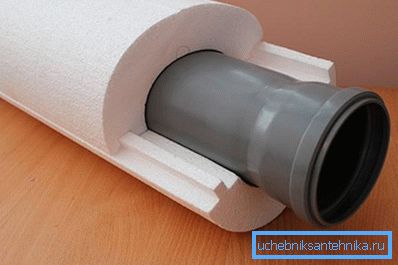
If the decision is made to lay the storm sewer pipes above the level of soil freezing, they must be insulated. For this you can use a variety of materials. But here the main thing to remember is that the insulation will always be in an aggressive environment.
For insulating pipes, you can use polyurethane. Today, special designs are made of this material that are easily put on the pipes. Such a "shell" will reliably protect stormwater from temperature extremes.
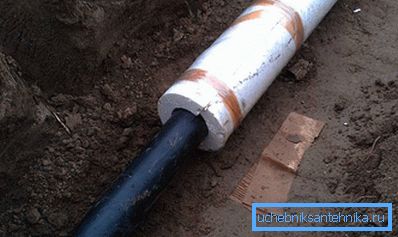
It is also convenient to use foam or polystyrene foam. Ready-made heat insulators are made of such material. It is made of two halves and easily snaps on the pipe.
One of the modern heat insulators is Penoizol. It is poured in liquid form directly into the ditch with a pipe. After hardening, it turns into a good and durable insulation. But for its installation it is necessary to use special equipment, which is not always possible.
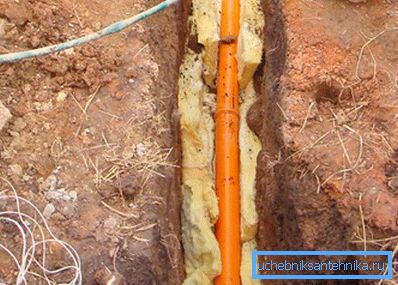
But mineral wool and polyethylene foam are not very suitable for insulation of pipes in the ground. Even if you make a special box to protect the insulation, it is unlikely to last long enough.
Summarize
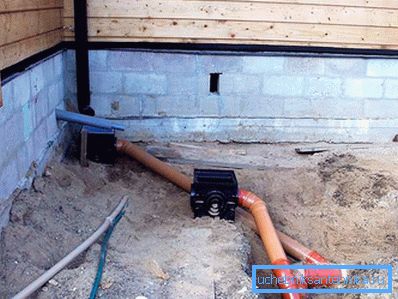
If we carry out some results, we can draw the following conclusions:
- The depth of laying of storm sewers should be greater than the depth of soil freezing, at least 30 centimeters.
- If laying at such a depth is not possible, then the stormwater must be warmed. Otherwise, there may be problems in winter.
Depth determination is an individual matter and depends on many factors. If the ground and the terrain allows, you can do everything according to the SNiP. Well, if this is not possible - it is worth insulating pipes.
Video
This video explains in detail how deep the sewer pipe should be: